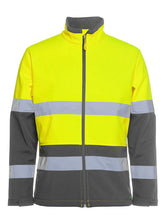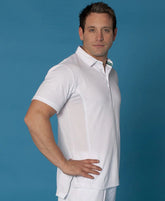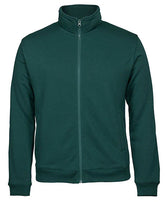How to Choose the Right Size in Bisley Flex and Move Workwear
Getting your workwear size right is more than just a matter of comfort. For tradespeople, a proper fit is crucial for safety, mobility, and performance on the job. Ill-fitting clothes can restrict movement, create snag hazards, or simply wear out faster. Bisley's Flex and Move range is engineered for durability and flexibility, but to get the most out of it, you need to start with the perfect size.
This guide will walk you through everything you need to know to confidently choose the right size in Bisley Flex and Move workwear. We will cover how to measure yourself accurately, understand Bisley's sizing charts, and address common fitting issues.
Why a Perfect Fit Matters in Workwear
Think about your daily tasks. You might be climbing ladders, crawling into tight spaces, or operating heavy machinery. Your workwear needs to move with you, not against you.
- Safety: Clothing that is too loose can get caught in equipment, creating a serious safety risk. Garments that are too tight can restrict your movement, making you less agile and potentially leading to strains or injuries.
- Comfort and Performance: The Flex and Move range is designed with built-in stretch. A proper fit ensures you get the full benefit of this technology, allowing you to bend, stretch, and move without feeling restricted. This comfort directly impacts your focus and productivity throughout the day.
- Durability: Workwear that fits correctly experiences less stress on seams and fabric. Overly tight pants will strain the crotch and knee areas, while overly loose shirts can snag and tear. The right size helps your gear last longer, giving you better value for your money.
How to Take Your Measurements Accurately
The first step to finding your size is to get accurate body measurements. Guessing or using the size of your casual clothes often leads to a poor fit, as workwear sizing can be different. Grab a flexible measuring tape and follow these steps. For the best results, measure over your undergarments, not over bulky clothing.
For Men
- Chest: Place the tape measure under your arms and wrap it around the fullest part of your chest. Keep the tape level across your back and snug, but not tight.
- Waist: Find your natural waistline, which is usually the narrowest part of your torso (often just above your belly button). Wrap the tape around this point. Keep it straight and make sure you can fit one finger between the tape and your body. Don't suck in your stomach!
- In-Leg (Inseam): This measurement is for pants. Measure from the crotch seam down the inside of your leg to your desired hem length, which is typically at the top of your work boot. It’s easiest to have someone help you with this, or you can measure the inseam of a pair of existing pants that fit you well.
For Women
- Bust: Similar to the men's chest measurement, wrap the tape around the fullest part of your bust, ensuring it is level all the way around.
- Waist: Measure around your natural waistline, the slimmest part of your midsection.
- Hips: Stand with your feet together and measure around the fullest part of your hips and bottom. This is a key measurement for finding well-fitting pants and shorts.
- In-Leg (Inseam): Follow the same process as the men's in-leg measurement, from the crotch to where you want the pants to end.
Pro Tip: Write down your measurements. This will be your personal sizing guide for all future workwear purchases.
Understanding Bisley Sizing Charts
Once you have your measurements, you are ready to use the Bisley sizing charts. These charts are the most reliable tool for converting your body measurements into the correct garment size. You will typically find separate charts for men and women, and for different types of garments (tops, pants, etc.).
Reading the Chart
A sizing chart will have columns for different body measurements (like chest or waist in centimeters or inches) and corresponding garment sizes (S, M, L, or numerical sizes like 82R, 92S).
- Find Your Measurement: Locate your measurement on the chart. For example, if your waist measures 88 cm, find the "Waist" column.
- Match to the Size: Look across the row to find the corresponding Bisley size. An 88 cm waist might correspond to a size 87R in pants.
- Check All Relevant Measurements: For tops, the chest measurement is most important. For pants, the waist is the primary guide. Always cross-reference if multiple measurements are provided.
What Do the Letters Mean? (R, S, L)
For Bisley work pants, you will often see sizes like "87R," "92S," or "102L." The number refers to the waist measurement in centimeters. The letter refers to the leg length:
- S (Stout/Short): A shorter inseam for those with shorter legs.
- R (Regular): The standard, most common inseam length.
- L (Long): A longer inseam for taller individuals.
Choosing the correct leg length prevents your pants from dragging on the ground or riding up too high on your boots.
Common Sizing Questions and Concerns
Even with measurements and charts, you might have some questions. Let's address the most common ones.
What if I'm Between Sizes?
This is a very common issue. For example, your waist might be 90 cm, placing you between a size 87R and a 92R. Here’s a good rule of thumb:
- For Flex and Move: The Flex and Move range has built-in stretch. Because of this, many people find it comfortable to size down if they are between sizes. This provides a closer, more modern fit without restricting movement.
- Consider the Fit You Prefer: If you like a looser, more traditional workwear fit, you may prefer to size up.
- Tops vs. Bottoms: For tops like shirts and jackets, consider how you will wear them. If you plan to layer clothing underneath, sizing up is a good idea to ensure you have enough room.
Men's vs. Women's Fit
Bisley offers dedicated workwear lines for both men and women. It's important to choose the line designed for your body shape.
- Women's Workwear: Is cut to accommodate a woman's curves. Pants will have more room in the hips and thigh, and a waist that is designed not to gap at the back. Shirts are shaped to fit the bust and waist, providing a more flattering and comfortable fit than a smaller men's size.
- Men's Workwear: Is typically cut straighter through the body and hips.
Attempting to wear a men's size as a woman (or vice-versa) will almost always result in a poor fit in key areas, compromising both comfort and safety.
Does the Fabric Affect the Size?
Yes, absolutely. The Bisley Flex and Move collection is made from fabrics with added stretch (like elastane or spandex). This means the garments are more forgiving and offer a greater range of motion compared to traditional, 100% cotton drill workwear. You can expect a closer, more active fit from a Flex and Move garment compared to a classic Bisley item in the same size.
Final Tips for Choosing Your Bisley Workwear
- Remeasure Every Year: Bodies change over time. It's a good practice to remeasure yourself once a year to ensure you're still ordering the correct size.
- Read Product Descriptions: Pay attention to fit descriptions like "active fit" or "classic fit." An active fit will be more tailored and closer to the body.
- Trust Your Measurements: Don't get caught up on the size number. The most important thing is that the garment fits your body correctly. Your measurements are a more reliable guide than the size tag on your old jeans.
By taking the time to measure yourself and understand the sizing charts, you can ensure your Bisley Flex and Move workwear fits perfectly from day one. This investment in a proper fit will pay off in enhanced safety, comfort, and performance on any job site.








